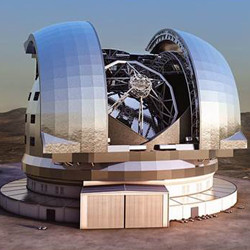Europe’s new astronomical infrastructure
In recent years, the expectation that older astronomical research infrastructure would be replaced has not panned out, mainly for cost reasons. Few new facilities have been commissioned, leaving the existing infrastructure to continue the bulk of research, although in smarter and more collaborative ways. The EU-funded OPTICON(opens in new window) (Optical infrared co-ordination network for astronomy) project coordinated the multinational collaboration. The current project is a renewal of a previous FP6 project of the same name, which developed adaptive optics systems for the SPHERE spectropolarimeter. The new consortium structured the European astronomical community by supporting research, plus assisted with both plans for future facilities and the technologies needed. OPTICON had responsibility for all modern mid-size telescopes, and managed numerous networking, transnational access and joint research activities. The project supported a number of scientific and technical meetings and also workshops. OPTICON furthermore organised a training programme, including high-impact interferometry and photonics courses, run though schools and workshops. OPTICON also supported engineering developments in European optical/infrared astronomy. In particular, the team investigated disruptive technologies. The consortium also aided instrument development for the E-ELT, a 39-metre ground-based telescope planned for Chile in the early 2020s. The studies of adaptive optics technologies produced unique results, often of critical significance for the E-ELT. The studies assessed and mitigated key technical risks for the E-ELT, and will aid ongoing design programmes intended to improve scientific productivity. Researchers carried out theoretical development of adaptive optics systems, followed by experimental testing. Consortium members achieved world firsts with the CANARY demonstrator instrument for the William Herschel Telescope, in the field of tomographic wide-field adaptive optics. A spin-off development has been fibre optic-based 3D bend sensors for use in various branches of research. The system is sensitive enough to detect the shape deformations in a human chest caused by the heartbeat. OPTICON delivered high-quality tools to the astronomical community, and helped support new developments in the field. The project’s fostering of networking and training also helped cultivate interest and to share skills.




